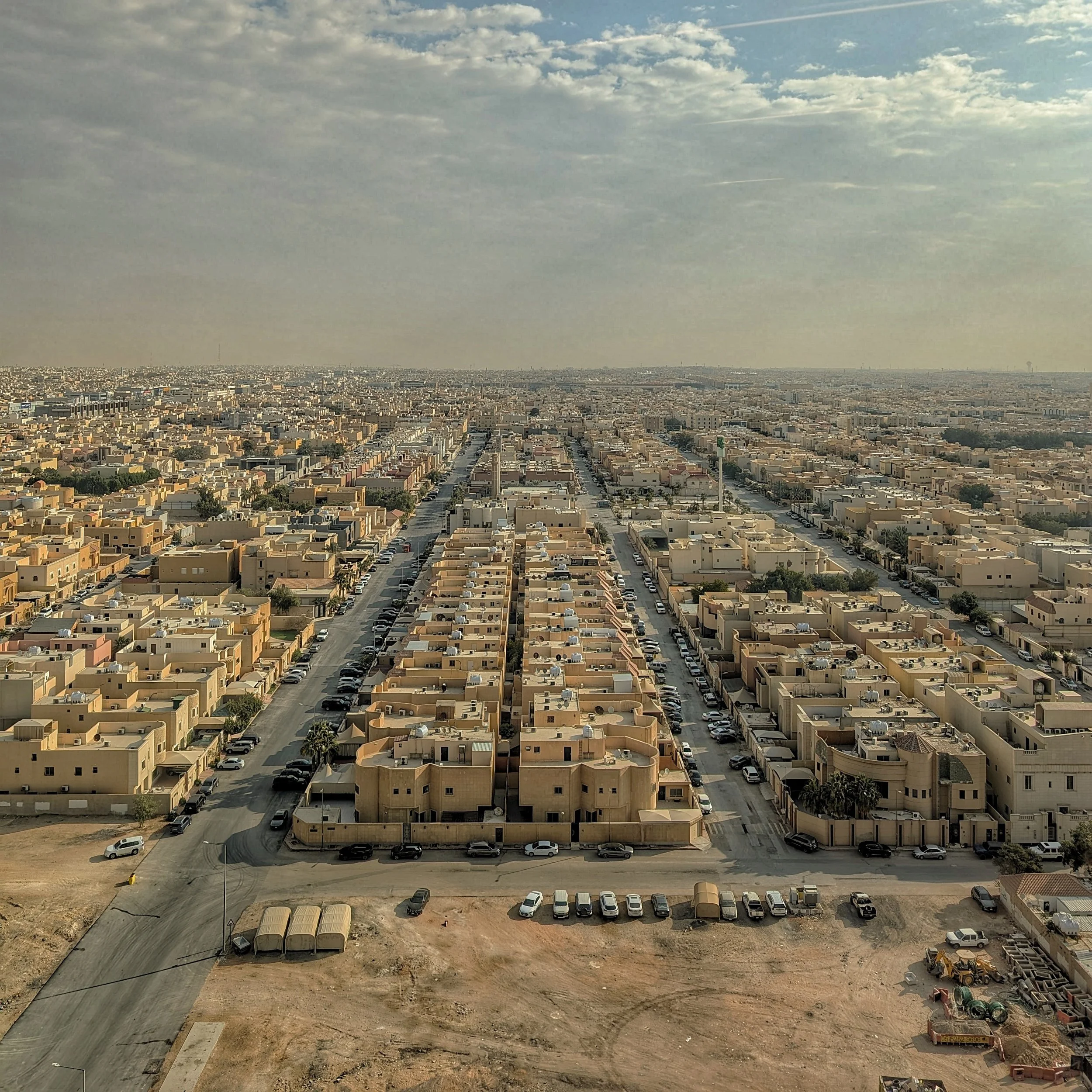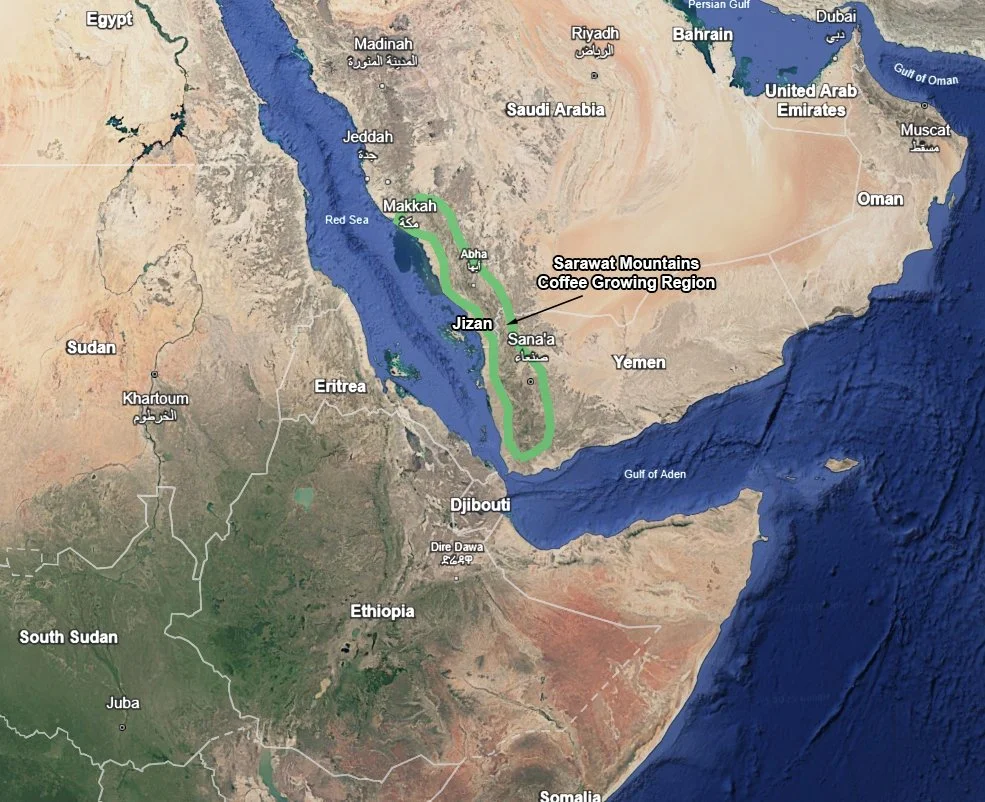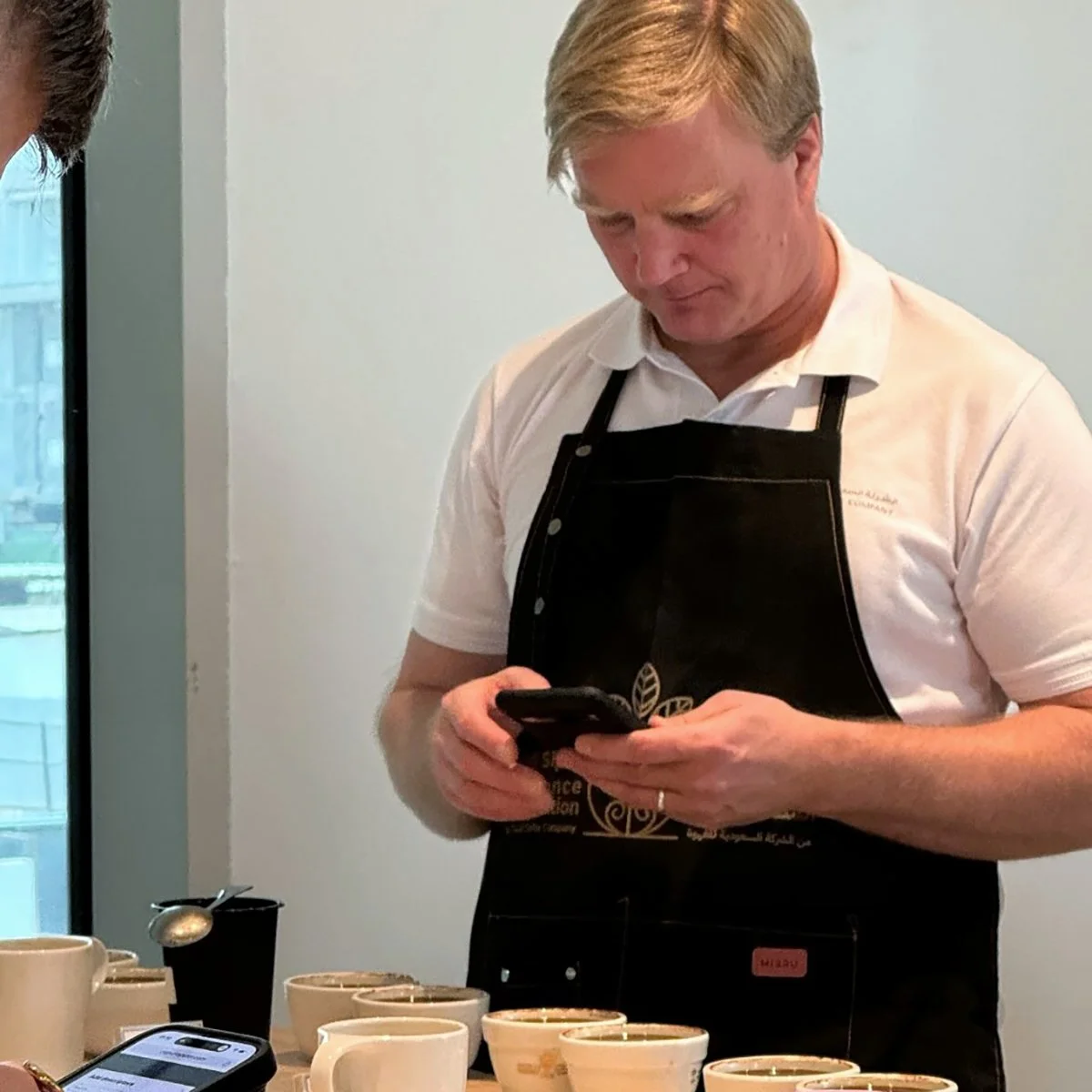Modernizing A 500-Year-Old Coffee Tradition
Saudi Arabian Coffee Opens To The World!
By Peter Jones.
At the end of January I made the long 36 hour journey to Jizan, Saudi Arabia, a small town located on the Red Sea and at the foot of the Sarawat mountains for the first ever Saudi Sip of Excellence Competition. As one of only 8 International Judges invited to the competition, not only was I deeply honored to attend, but also highly curious to learn more about Saudi Arabian coffee. I’d had coffee from Yemen numerous times, but never any coffee from Saudi Arabia.
The Saudi Sip of Excellence Competition – organized by the Saudi Coffee Company and Alliance for Coffee Excellence – is part of a larger project by the Saudi government to bring international awareness to Saudi coffee, see how Saudi coffee stacks up to international standards, raise coffee production in Saudi Arabia, and to incorporate modern scientific coffee farming and processing practices into those of the ancient traditional methods that have been handed down for generations.
The story of how coffee spread around the globe is well known – indigenous to Ethiopia and the surrounding Boma Plateau it was traded by merchants into the southern part of the Arabian Peninsula before spreading to the Levant, Europe, India and then eventually Indonesia and the Americas (1). Ancient ports in present-day Yemen are generally acknowledged as the location of coffee’s entry to the Arabian Peninsula, but it is the ancient Khawlan tribes who lived in the mountains above the trading ports who were responsible for planting and cultivating coffee throughout the Sarawat mountains (2). The Sarawat mountains, also known as the Sarat Khawlan mountains, are a range of mountains running south to north in parallel to the eastern coast of the Red Sea, spanning both modern day Yemen and Saudi Arabia, and it is in these mountains that coffee has been grown for over 500 years.
One of the earliest written records on coffee comes from the 15th century, where it is documented that the Sufi Imam Muhammad Ibn Said al-Dhabhani imported coffee from Somali merchants. His community centered around present-day Turbat Dhubhan, a historic Khawlan tribal area in the southern mountains of Yemen (3). Once the Khawlan tribal people had coffee, it quickly spread throughout the mountains in both Yemen and Saudi Arabia from tribal village to tribal village (4). Yemen has received a lot of attention for its coffee in recent years, while Saudi Arabian coffee has remained somewhat in the shadows. That is starting to change, and the Sip of Excellence competition along with the Saudi Coffee Company are spreading awareness of Saudi Arabian coffee – how good and unique it is, how rare it is, and how it fits into the larger history of coffee.
There are four major coffee growing areas in Saudi Arabia, all located in the Sarawat mountains – Jizan in the south along the Yemen border, Rijal Almaa directly north, Mahayel Asir in the middle, and Al-Baha on the northern edge of the mountain range. All coffee grown in Saudi Arabia comes from these four regions where moisture from the Red Sea rises and is then dropped on ancient, terraced coffee fields between 1600-2000 masl (5,200-6,500 feet). These ancient terraces, built by Khawlan tribal people hundreds of years ago, are ingenious in the ways that they capture every ounce of moisture and allow coffee trees to grow – each terrace slopes back into the mountain so no water drains off; each terrace is about 2-3 meters (7-10 feet) high so that coffee trees can be picked from both the ground and from the terrace above; each terrace has a built in water capture systems so that any excess water is transported to the terrace below; and most terraces are located on mountain aspects that provide natural shade for the coffee plants.
Today’s farmers are all descendants of the ancient tribal people who first planted and grew coffee in the mountains some 500 plus years ago. What type of coffee they grow, however, is still unknown. The local vernacular name for the coffee is Kholani/khawlani and it is believed to be an ancient Typica varietal that has diverged into four unique groups based on DNA analysis (5). These ancient varietals, grown only in the mountains of Saudi Arabia, were what we had the honor to cup and score during the competition.
The competition was organized and run like all Cup of Excellence competitions – any farmer could submit their lot, all types and processes of coffee were accepted into the competition except for co-fermented coffees (yeast and microb added coffees were allowed), and all coffees were roasted and cupped blind. Out of the 146 coffees submitted, 36 scored above 86 points and moved on to the international phase. Over three days we cupped through the top 36 coffees, for a total of 1,728 cups, before the results were announced. Scoring the coffees proved to be difficult – the cup profiles were unlike any other coffee I had tasted – deep, rich chocolate and sugar notes, complex baking spices, lots of berries, and a complementary, but slightly lower, acidity level than what would be typical of some other more common origins.
A few coffees scored 88-89+ points, while the rest scored between 86-87 points. As a judge, I was curious why we didn’t see more coffees in the 89 point and up category, given Saudi’s long tradition of coffee farming. It turns out, after talking with Head Judge Luis Rodriguez Ventura, Head of QC for Tallan Farm in Jizan Badr AlKurashi, and some of the local tribal farmers, that modern approaches to coffee growing and processing have never been introduced – every coffee we cupped was produced using the ancient traditional methods handed down generation to generation.
Let me emphasize that last point – we had 87 to 89 point coffees that were produced without brix meters, without moisture meters, without using raised beds, without constant raking of the cherries during the drying phase, and so on. The coffees in the competition were generally picked, placed on patios to dry, and then stored in cool, dark rooms – that was the extent of their processing. This is an incredible testament to the traditional coffee heritage found in Saudi Arabia and to the potential of Saudi coffee on the world stage.
This also brings us full circle – Saudi Arabia obviously has amazing coffee, with varietals that are found nowhere else, along with a long and proud coffee heritage – but putting those coffees on the larger world coffee map is just starting, and competitions like the Sip of Excellence help provide that vehicle. As a result of the work of the Saudi Coffee Company, Alliance for Coffee Excellence, and many others, international buzz around Saudi coffee is starting to happen. Saudi coffee farmers, as well as coffee roasters, green traders, and others are learning that Saudi coffee ranks among the best in the world. One of Saudi Arabia’s slogans is “This Land is Calling” and now this land is calling all coffee lovers to enjoy the coffee of Saudi Arabia.
(1). Weinberg, Bennett Alan; Bealer, Bonnie K. The World of Caffeine: The Science and Culture of the World’s Most Popular Drug. 2001.
(2). Brandt, Marieke. The Contemporary Structures and Historical Formation of the Khawlan and Juma’ah Tribes in Sa’dah, Northwest Yemen. Anthropology of the Middle East, Vol. 9(1). 2014.
(3). Arabic Language: Or Extras from Different Arab Languages, Once They Are Used, In The Use of Special Language in Local Oriental Languages. Volume 1. 1806. https://books.google.co.uk/books?id=jaFFAAAAcAAJ&source=gbs_navlinks_s
(4). Wellman, Frederick Lovejoy. Coffee: Botany, Cultivation, and Utilization. 1961.
(5). Khemira, Habib; et al. Assessment of Genetic Diversity and Phylogenetic Relationship of Local Coffee Populations in Southwestern Saudi Arabia Using DNA Barcoding. PeerJ 11, e16486. 2023.














